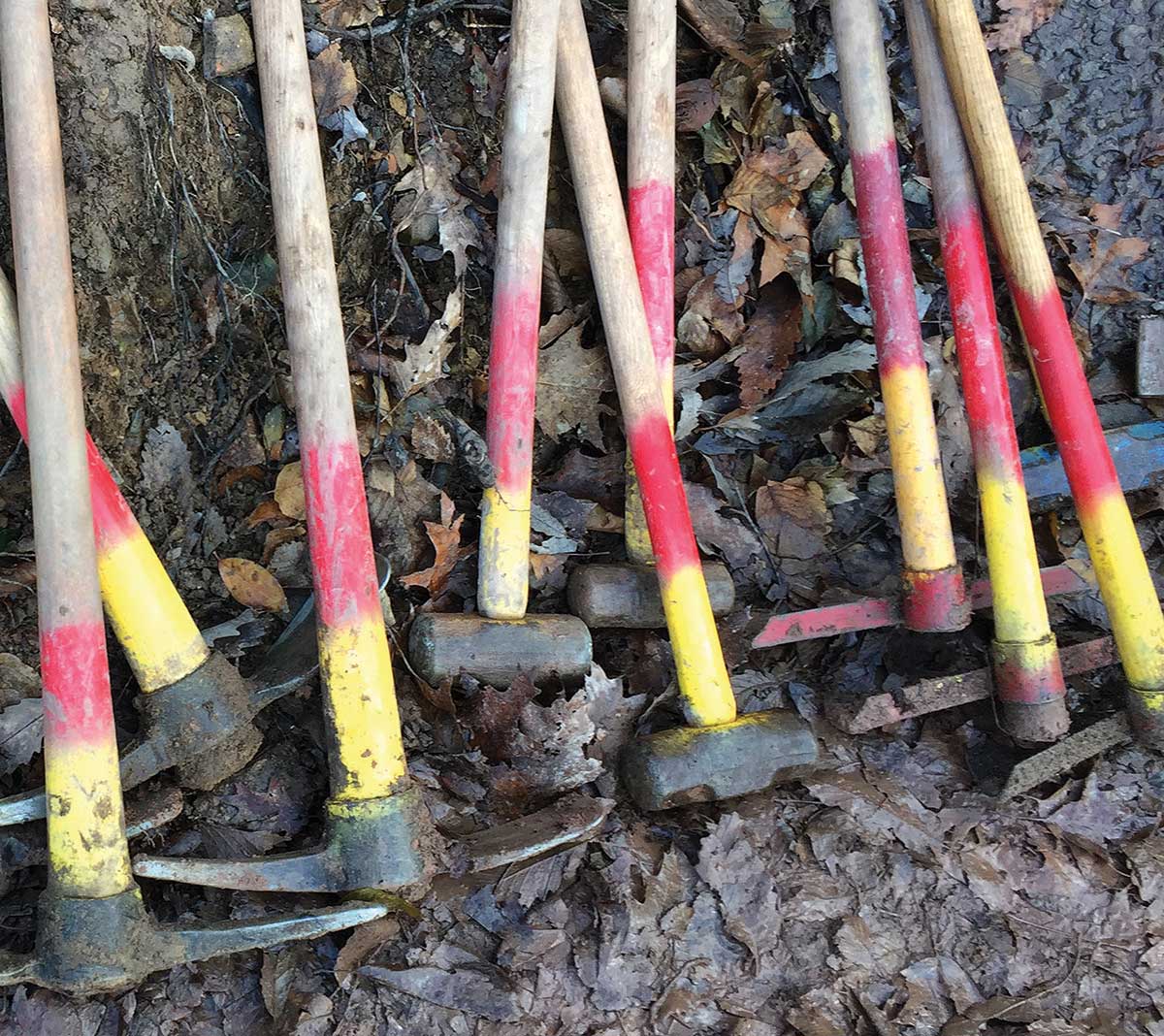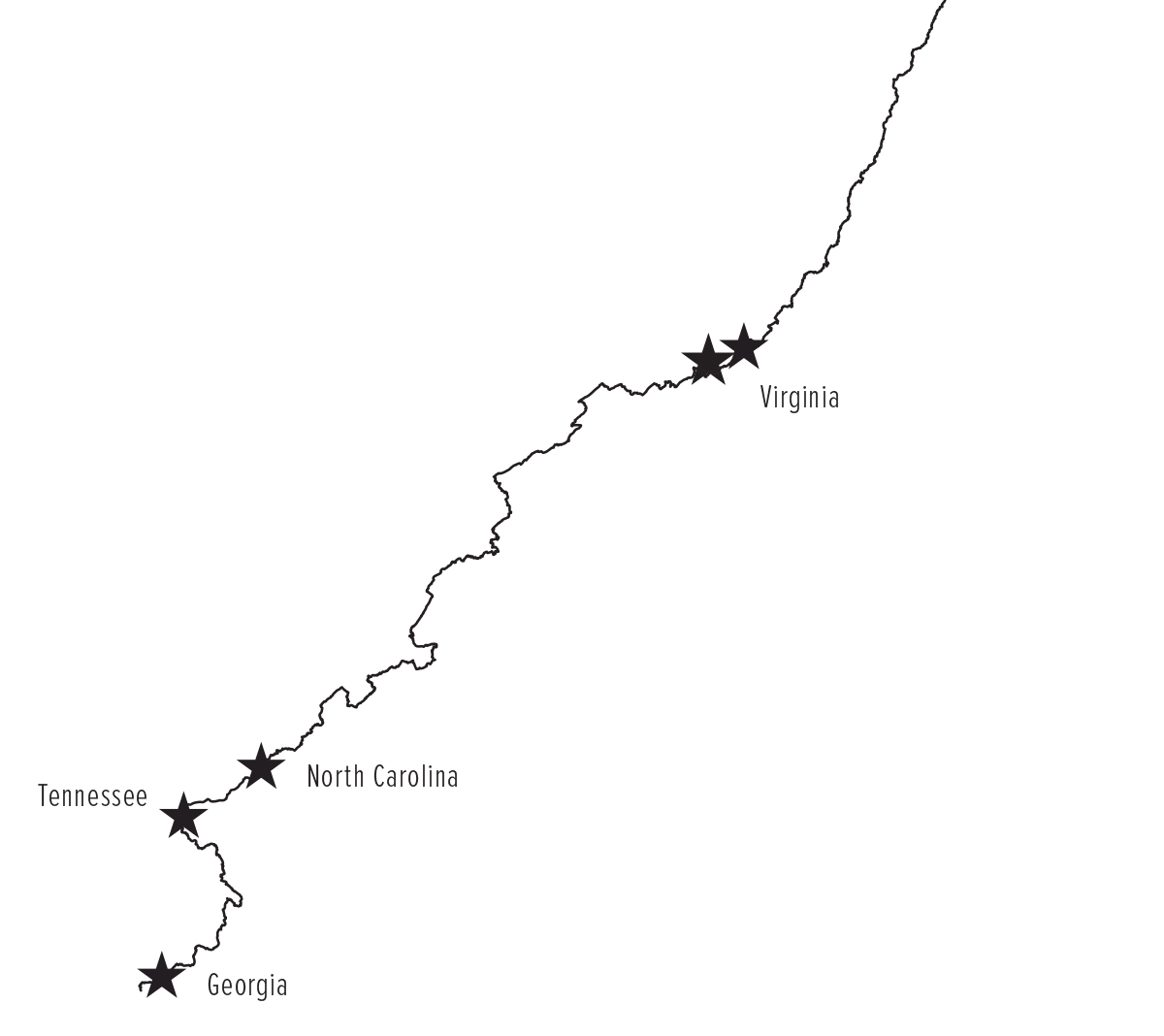A three-year relocation of the Trail in central Virginia was just completed at the end of 2018, replacing a steep and slippery scramble with a gently-graded switchback. The final half-mile of the northbound ascent of Sinking Creek Mountain was identified as a problem over a decade ago, since steep alignment made the Trail hazardous in wet conditions. But finding a new route was complicated by a relatively narrow corridor of national forest land and an abundance of rock fields. The new switchback fits just within the corridor, and features over 200 rock steps and many large stone crib walls built to last for generations. An observant hiker can enjoy a challenging but more enjoyable climb, as well as the beauty of the durable, technical stone structures.
More than 100 volunteers from the Appalachian Trail Conservancy’s (ATC) Konnarock Trail Crew and the Roanoke A.T. Club contributed almost 4,000 hours to complete the relocation. Volunteers from the nearby Natural Bridge A.T. Club and the Outdoor Club at Virginia Tech pitched in too, especially for the final “Special Forces” push to open the new section in December. Relocations like this are integral to the ever-evolving A.T.
A three-year relocation of the Trail in central Virginia was just completed at the end of 2018, replacing a steep and slippery scramble with a gently-graded switchback. The final half-mile of the northbound ascent of Sinking Creek Mountain was identified as a problem over a decade ago, since steep alignment made the Trail hazardous in wet conditions. But finding a new route was complicated by a relatively narrow corridor of national forest land and an abundance of rock fields. The new switchback fits just within the corridor, and features over 200 rock steps and many large stone crib walls built to last for generations. An observant hiker can enjoy a challenging but more enjoyable climb, as well as the beauty of the durable, technical stone structures.
More than 100 volunteers from the Appalachian Trail Conservancy’s (ATC) Konnarock Trail Crew and the Roanoke A.T. Club contributed almost 4,000 hours to complete the relocation. Volunteers from the nearby Natural Bridge A.T. Club and the Outdoor Club at Virginia Tech pitched in too, especially for the final “Special Forces” push to open the new section in December. Relocations like this are integral to the ever-evolving A.T.

